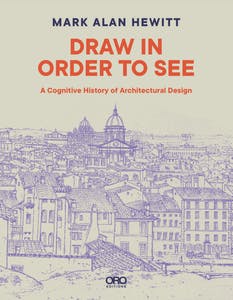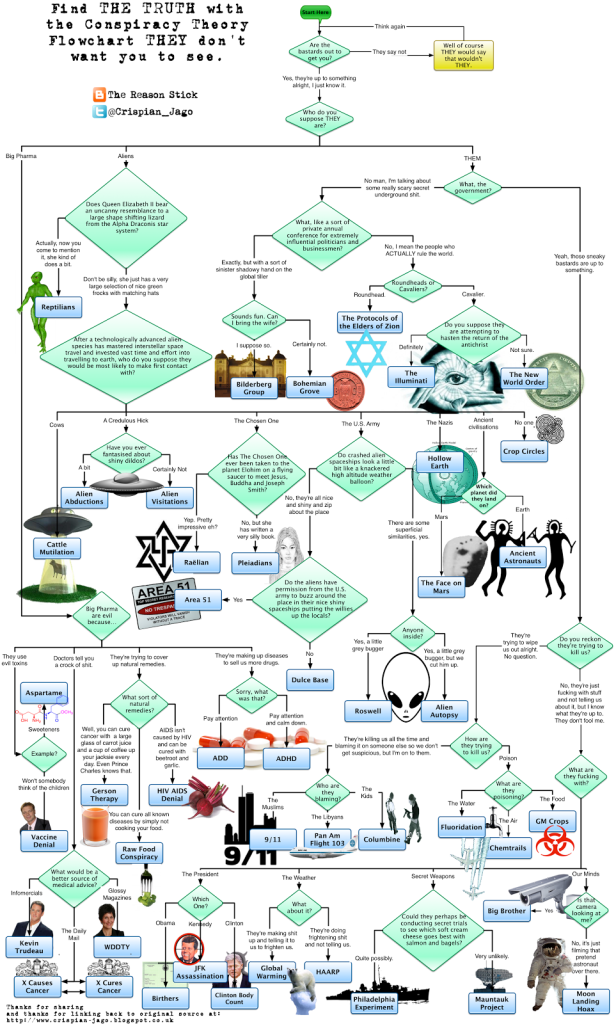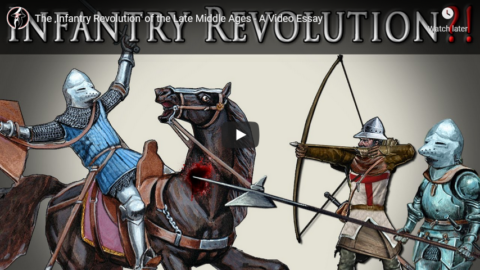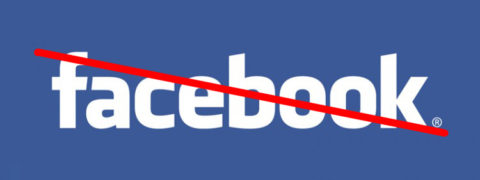In private, however, or when addressing his soldiers, Napoleon was contemptuous of the Islamic word. “You have come to this country,” he told his army before the battle of the Pyramids, “to save the inhabitants from barbarism, and to bring civilisation to the Orient.” This was why, in addition to muskets, cannon and cavalry, he had brought with him to Egypt a printing press, a hot-air balloon and a small army of intellectuals.
The blaze of the Enlightenment, although it might seem to have been lit in Europe, was not just for Europeans. All the world had the potential to share in its radiance. Illumination was the same wherever it manifested itself, and this meant that in Peking as in Paris, in Baghdad as in Bordeaux, there were sages more than qualified to rank alongside Voltaire and Diderot.
The Enlightenment, far from ranking as something parochial and culturally contingent, was properly a global phenomenon. These various dogmas, which the philosophes had tended to take for granted, had then been given a new and militant edge by the French Revolution. That religion was superstition; that rights were universal; that equality, individual liberty and freedom of expression were simultaneously natural and sacred: these were the convictions that had inspired in the citizens of revolutionary France their continent-shaking sense of certitude. Thrones had been toppled; abbeys demolished; the detritus of a benighted past erased. And if in Europe, then why not further afield? The Rights of Man were for everyone, after all, or they were nothing. “Any law that violates them,” as Robespierre had put it, “is fundamentally unjust and tyrannical. Indeed, it is not law at all.”
This sense of missionary purpose, which inspired in those who felt it an ambition to bring the entire world from darkness into light, outlasted the execution of Robespierre, the defeat of Napoleon, the seeming triumph of reaction across post-revolutionary Europe. In 1854, when the Ottoman Empire was facing a critical threat from Russia, France joined Britain in insisting as a condition of its entry into the Crimean War that the slave trade across the Black Sea be abolished.
Also abolished was the jizya, a tax on Jews and Christians that reached back to the very beginnings of Islam, and was directly mandated by the Qur’an. Such measures, to the Ottomans, risked immense embarrassment. The effect, after all, was to reform Islamic jurisprudence according to the standards of non-believers. It was, for Muslim traditionalists, an ominous straw in the wind. Over the course of the century and more that followed, the weathering effects of Western hegemony on the practices that Muslims believed they had inherited from Muhammad — the Sunnah — became more and more pronounced.
Tom Holland, “The age-old tension between Islam and France”, UnHerd, 2020-11-02.
February 25, 2021
QotD: Islam and the impact of the Enlightenment
February 24, 2021
Solzhenitsyn was far from the first to warn about the evils of Soviet rule
Theodore Dalrymple had a discussion recently with a Marxist professor:
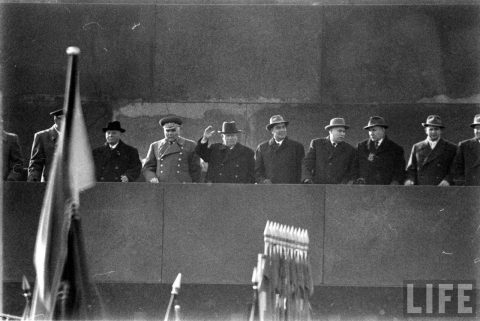
Krushchev, Brezhnev and other Soviet leaders review the Revolution parade in Red Square, 1962.
LIFE magazine photo by Stan Wayman.
The professor was an intelligent man, and probably cultivated too. How was it possible, in the Year of Our Lord 2021, for such a person still to believe that, until the advent of Stalin, the Russian revolution was a good thing, to be emulated or repeated elsewhere?
How could anyone of his intelligence fail to realise that, though as ever there was much wrong with the world, attempts to put everything right at once by the implementation of petty intellectual schemes are fraught with danger, and have a history of mass slaughter behind them?
I think the answer must lie in the psychology of religion: when religious faith is replaced by a philosophy that prides itself on its rationality, it soon turns religious in the worst possible sense. it becomes an atheist theocracy.
Everything was known about the Soviet Union from the first. It is simply not true that Solzhenitsyn revealed anything to the West that, in essence, was not, or could not have been, known before.
I have, in desultory fashion for a number of decades, been collecting books about Russia and the Soviet Union from just before the Revolution until the Second World War, and while it is true that many of them are laudatory, with titles that now seem hilarious to us such as The Soviet Union Fights Neurosis, a very large number books of various genres, from essays to histories to memoirs to novels and short stories, were published that exposed the viciousness of Bolshevism from the very first — a viciousness that anyone with any imagination could have anticipated from Lenin’s literary style alone.
Leninist viciousness was viciousness of a new and more thoroughgoing type that acted on the mind as a virus acts on a computer (viciousness, both actual and potential, is, alas, a constant of human history because of our flawed nature).
Solzhenitsyn was right about the difference between Macbeth, who from personal ambition killed people, but only a few, and the ideologically-motivated mass-killings of the Soviet Union and elsewhere — the difference being precisely in the effect of ideology.
But what was really different about Solzhenitsyn, apart from his literary talent, was that Western intellectuals were now prepared to believe what he said, whereas shortly before they had rejected as mere propaganda evidence of a very similar nature produced by others.It was so startling to meet someone who still believed that a “pure” revolution could take place, and that such a person was teaching history of all things, in a reputable, or at any rate reputed, university, that, like Karl Kraus confronted by Hitler, I could think of nothing to say.
I had no idea whether he still taught undergraduates, or whether in doing so he suppressed at least some of his views (as a judge is supposed to suppress his own private opinions): but I confess that the charge against Socrates, that of corrupting youth, came into my mind.
Japan’s Biological Terror! – The Horror of Unit 731 – WW2 Special
World War Two
Published 23 Feb 2021As one of the few nations during World War Two, Japan made expensive use of biological and chemical weapons, both on and off the battlefield. Unit 731 is their special bio-warfare department, which conducts testing on living human civilians.
Join us on Patreon: https://www.patreon.com/TimeGhostHistory
Or join The TimeGhost Army directly at: https://timeghost.tvFollow WW2 day by day on Instagram @ww2_day_by_day – https://www.instagram.com/ww2_day_by_day
Between 2 Wars: https://www.youtube.com/playlist?list…
Source list: http://bit.ly/WW2sourcesHosted by: Spartacus Olsson
Written by: Joram Appel
Director: Astrid Deinhard
Producers: Astrid Deinhard and Spartacus Olsson
Executive Producers: Astrid Deinhard, Indy Neidell, Spartacus Olsson, Bodo Rittenauer
Creative Producer: Maria Kyhle
Post-Production Director: Wieke Kapteijns
Research by: Joram Appel
Edited by: Karolina Dołęga
Sound design: Marek KamińskiColorizations by:
– Daniel Weiss
– Mikołaj Uchman
– Dememorabilia – https://www.instagram.com/dememorabilia
– Klimbim
– Norman Stewart – https://oldtimesincolor.blogspot.com/Sources:
– National Archive NARA
– Imperial War Museums: D 3162, HU67224, HU 44941, Q 114057
– BundesarchivSoundtracks from Epidemic Sound:
– “For the Many STEMS INSTRUMENTS” – Jon Bjork
– “Weapon of Choice” – Fabien Tell.
– “Moving to Disturbia” – Experia
– “Symphony of the Cold-Blooded” – Christian Andersen
– “It’s Not a Game” – Philip Ayers
– “Please Hear Me Out STEMS INSTRUMENTS” – Philip Ayers
– “London” – Howard Harper-Barnes
– “Break Free” – Fabien Tell
– “Not Safe Yet” – Gunnar JohnsenArchive by Screenocean/Reuters https://www.screenocean.com.
A TimeGhost chronological documentary produced by OnLion Entertainment GmbH.
An antidote to the poison of modern architecture?
In The Critic, James Stevens Curl reviews a new work by Mark Alan Hewitt that he calls “a welcome breath of sound common sense in a field where expensive insanity seems to have ruled the roost for far too long”:
That architecture and architectural education are in a terrible state is obvious to anybody in the field. The reasons for this catastrophe are many, but some of the primary causes have been the universal embrace of the cult of inhumane modernism devoid of ornament (“a crime”), beauty, or even fun; the arrogant ditching of history and disregard of architectural precedents; the devaluation of craftsmanship through the adoption of factory-made components; and the desensitisation of architectural students terrorised and bullied into acceptance of nonsense by means of design “juries”, and by the compulsory study of false “grand narratives” of modernism that are patently distorted.
One of the worst of those pernicious texts was Nikolaus Pevsner’s Pioneers of the Modern Movement from William Morris to Walter Gropius (1936), the title of which should have been enough to put off anyone who knew anything about art history. The creation of an entirely spurious connection between Arts-and-Crafts practitioners like Morris and modernists like Gropius was part of a campaign to create respectable father-figures for disreputable modernism; to legitimise the unspeakable by giving it a fabricated historical pedigree.
It says a lot about the flabbiness of the architectural world that it so readily accepted not only Pevsner’s sacred cowdom, but his enthusiastic endorsement of the Modern Movement in architecture as the “new style” of the twentieth century; a “genuine style as opposed to a passing fashion”, and one, moreover, that was, as Pevsner approvingly noted, “totalitarian”, a remark that did not even arouse a frisson of anxiety among the dimwits. Elizabeth Cumming and Wendy Kaplan put it neatly in their The Arts and Crafts Movement (1991 & 2002): they observed that few “now accept the view of Nikolaus Pevsner, put forward in his influential Pioneers … of Arts and Crafts as an antecedent of modernism”. Unfortunately, that is not true of “schools of architecture” in which falsehoods are still taught, and people like C.F.A. Voysey, who hated the modernists and everything they stood for, was held by Pevsner, in the teeth of objections by Voysey himself, to have been such a “pioneer”, a libel still perpetrated to this day in recent publications.
The widespread acceptance of untruths, obvious errors, and false attributions can only be explained if some cognitive functions have been shut down. To swallow the sort of twaddle peddled by Pevsner one would need to disengage what one actually sees from one’s understanding: in other words, instead of looking at something with care and forming sensible judgements based on careful comparisons and observations, one has one’s vision impaired by peering through Bauhaus-tinted spectacles, and therefore sees what Pevsner & Co. want one to see. In other words, whole generations have been brought up, not to see with their eyes, but to look with their ears.
Hewitt’s intelligent new book argues persuasively for the advantages of drawing in helping us to see. So often, the camera and the mobile phone are used to record something, but it is true (and I speak from many years of experience), that one can really only understand a building or an artefact by drawing it.
Disney’s Best Propaganda Cartoon
J.J. McCullough
Published 21 Nov 2020A review of Education for Death, a WW2 propaganda film. This video was sponsored by the Great Courses Plus! Start your free trial today by clicking here: http://ow.ly/az9m30rkCKF
Check out Three Arrows here: https://www.youtube.com/channel/UCCT8…
During the World War II, Disney made a number of cartoons to boost public support for the Allies and denounce Germany. This one, about Little Hans, has always been my favorite.
FOLLOW ME:
Support me on Patreon! https://www.patreon.com/jjmccullough
Join my Discord! https://discord.gg/3X64ww7
Follow me on Instagram! https://www.instagram.com/jjmccullough/
Read my latest Washington Post columns: https://www.washingtonpost.com/people…
Visit my Canada Website http://thecanadaguide.com
HASHTAGS: #propaganda #history #germany
QotD: Margaret Thatcher
I know I’m supposed to hate Margaret Thatcher. I know that someone with my politics is meant to detest her as a union-busting, milk-snatching, women’s-lib-baiting, Belgrano-sinking, Section-28-devising, society-destroying nightmare. I know that when Gillian Anderson was cast as Thatcher in series four of The Crown, I should have played up a shudder of disgust at Gillian Anderson, who is good, playing Thatcher, who is bad.
But here’s the thing: I don’t hate Thatcher. It’s not that I’m a huge fan of her legacy or anything (although anyone who thinks that industrial relations were doing fine before her or that the Falklands were some kind of unjustified expedition is clearly a fantasist), it simply doesn’t matter whether I like her or not because she is just too interesting.
Thatcher wasn’t the first woman to lead a country, but unlike her predecessors, Indira Gandhi in India or Isabel Martínez de Perón in Argentina, she didn’t arrive sanctified by a political dynasty. She was, as Prince Phillip snobbily points out to the Queen in The Crown, a grocer’s daughter. In real life, such condescension came strongly from the Left. The Blow Monkeys, one of the bands involved in the Red Wedge tour to support Labour, released an album called She was only a Grocer’s Daughter in 1987; and even though several pop songs fantasised about her death, that never seemed quite as ugly as supposed defenders of the working class announcing that Thatcher was just too common to rule.
Sarah Ditum, “How Thatcher rejected feminism”, UnHerd, 2020-11-15.
February 23, 2021
Hitler’s Raiders in the Pacific
Kings and Generals
Published 21 Feb 2021Get your free trial of MagellanTV here: https://try.magellantv.com/kingsandge…. It’s an exclusive offer for our viewers: an extended, month-long trial, FREE. MagellanTV is a new kind of streaming service run by filmmakers with 3,000+ documentaries! Check out our personal recommendation and MagellanTV’s exclusive playlists: https://www.magellantv.com/explore/hi…
Kings and Generals 3d animated historical documentary series on modern warfare continues with a video on the German naval raiding vessels which attacked Australia, New Zealand and other Allied territories in the Pacific Ocean during the early portions of World War II. This episode focuses on the exploits of Orion, Komet, Pinguin, and Kormoran, explaining how the Kriegsmarine‘s vessels attacked the targets in the Pacific Ocean, especially Nauru and its phosphate facilities.
Support us on Patreon: http://www.patreon.com/KingsandGenerals or Paypal: http://paypal.me/kingsandgenerals. We are grateful to our patrons and sponsors, who made this video possible: https://docs.google.com/document/d/1o…
The video was made by Leif Sick, while the script was developed by Ivan Moran. The video was narrated by Officially Devin (https://www.youtube.com/user/Official…)
Merch store ► teespring.com/stores/kingsandgenerals
Podcast ► http://www.kingsandgenerals.net/podcast/
Twitter ► https://twitter.com/KingsGenerals
Instagram ► http://www.instagram.com/Kings_Generals
Production Music courtesy of Epidemic Sound: http://www.epidemicsound.com
#Documentary #WorldWar #Raiders
The danger period is when “the coherence of the news breaks” … and it appears to be breaking before our eyes
In the latest Libertarian Enterprise, Sarah Hoyt remembers the breakdown of the Soviet Union and the disturbing parallels we can see today:
Our likelihood of coming out of this a constitutional republic is still high. Why? Well, because societies under stress become more themselves.
I remember when the USSR fell. And out of the ashes Tzar Putin emerged, who is despicable, but not particularly out of keeping with Russian monarchy.
So, yeah, the pull of our culture will be towards the reestablishment of who and what we are and were: a constitutional republic.
But on the way …
Look, I remember when the USSR fell.
The people in the USSR knew they were being treated like mushrooms: kept in the dark and fed on crap. They knew there was truth in Pravda. But they were used to having certain information, and interpreting it.
And there is something worse than reading the news in totalitarianism. You can get used to interpreting the news, and knowing the shape of the hole of what they’re not reporting.
But once you realize it’s all nonsense, once the coherence of the news breaks — and it’s doing so now, earlier than I expected, with the Times article, with the New York Times admitting the protesters at the capitol didn’t kill the police officer — once there are holes, but they’re not consistent, or they’re consistent, but then contradicted; once the narrative changes almost by the week, to the point it can’t be ignored, that’s the dangerous period.
I know I joke that by the end of this year I’ll have to apologize to the lizard-people conspiracy theorists. But the problem is that the lizard people conspiracy theorists can acquire respectability and a strange new respect. Or something even crazier. Heck, a lot of crazier things.
To an extent the 9/11 troofer conspiracies, which yes, are crazy and also anti-scientific were our warning shot. That they flourished and that to this day a lot of people believe them means that there was already a sense that the news made no sense, that there were other things going on behind the scenes that we weren’t aware of.
It’s going to get far, far worse than that, as the actual elites, the top of various fields fall like struck trees in a thunder storm. There is a good chance that authorities you rely on for your profession, or just for your knowledge have been compromised. A lot of our research is tainted by China paying to get the results it wants, for instance. And there’s probably worse. You already know most research can’t be reproduced, and that’s not even recent.
As all this stuff comes out, the problem is that people won’t stop believing. Instead they’ll believe in all and everything.
I don’t know how much was reported here, as the USSR collapsed. but I remember what I read in European magazines and journals. All of a sudden it was all new age mysticism and spoon bending and only the good Lord knew what else.
And that’s what we’re going to head into. So, when you find yourself in the middle of an elaborate explanation that someone constructed, well …
First find the facts. Pace Heinlein: Again, and again what are the facts. Never mind if your ideology demands they be something else. Establish the facts to the extent you can. Facts and math don’t lie. (Statistics do. So be aware you can lie with them. And any metrics that involve intangibles, like intelligence or performance much less sociability or micro anything? forget about it.)
From the facts, deploy Occam’s razor. What is the simplest explanation?
Then remember that humans run at the mouth, and the more humans in the conspiracy, the more facts are likely to leak out somewhere.
And while we’ve seen a lot of Omerta among leftists, note that they’re all afflicted by evil villain syndrome. Sooner or later, they brag about how clever they were in deceiving us. So, if your conspiracy theory requires perfect silence forever, it’s probably not true.
The Corgi Toys Story
Little Car
Published 4 Feb 2020Corgi Toys is the name of a range of die-cast toy vehicles produced by Mettoy Playcraft Ltd. in the United Kingdom.
The script for this video comes from Wikipedia: https://en.wikipedia.org/wiki/Corgi_Toys
If you find issues with the content, I encourage you to update the Wikipedia article, so everyone can benefit from your knowledge.
To get early ad-free access to new videos, or your name at the end of my videos, please consider supporting me from just $1 or 80p a month at https://www.patreon.com/bigcar
Link to my other channel – Big Car: https://www.youtube.com/bigcar2
QotD: Canadian myths
The Canadian national temper is a funny thing, riddled with contradictions. It is plainly an abstraction, and yet it does seem to have discernible traits. Some jokingly regard it as absurdly apologetic — a Canadian is someone who says “sorry” when he is jostled. Canadians are polite and amiable, pacifist by nature; they are the world’s peacekeepers. Canadians regard themselves as morally superior, especially with regard to Americans. Canadians are inwardly attracted to failure, as Margaret Atwood contended in Survival — Canadians have a will to lose as powerful as the American will to win. And so on.
Canada is a huge but under-populated country. The wind echoes in our ears. Much has been made in our literature of the hardiness and resilience necessary for existence in a punishing climate and of the harsh labor required to extract the benefits of a resource-based economy. Susanna Moodie’s Roughing It in the Bush is an early classic detailing the rigors and challenges of domesticating an unforgiving milieu. Canadian fortitude is a national foundation myth.
David Solway, “The Canadian Mind: A Culture So Open, Its ‘Brains Fall Out'”, PJ Media, 2018-10-10.
February 22, 2021
The “Infantry Revolution” of the Late Middle Ages
SandRhoman History
Published 21 Feb 2021CuriosityStream link: https://curiositystream.com/sandrhoman
The “Infantry Revolution” of the late Middle Ages is kind of a hot topic among armchair historians and academics alike. This is how the argument goes: In the late Middle Ages, infantry grew in importance to the detriment of heavy cavalry; by then battles were increasingly won with pikes, longbows and arquebuses instead of mounted knights with lances, the argument continues, and as a result of that, the socio-political make-up and development of European polities changed lastingly. So, this Infantry Revolution supposedly had an incredible impact on European state building processes AND, the argument finally concludes, it laid the foundation to Europe’s conquest and colonization of many parts of the world. However, in public spaces such as YouTube this whole debate is more discussed in regards to tactics and fighting techniques than economics and politics. Consequently, much of the public discussion is about how and if the importance of knights changed after the High Middle Ages. Likewise, topics such as the efficacy of the English longbow or the impact of pikes in the late Middle Ages are frequently the subject of discussions. All of that is controversial to say the least but it gets worse: these changes must be viewed in the broader military changes such as the rise of gunpowder artillery between 1420 and 1530 — called an artillery revolution — the decline of sieges between the 1420s and the 1530s which, among many things, led to the resurgence of heavy cavalry in the later late Middle Ages. Lastly, all of these revolutions belong to a notion called “military revolution”. This video is not intended to argue one side or the other of the “infantry revolution” but to provide a broad overview over both the debate and the military changes during the 14th and 15th centuries. It explains how contemporary historiography quarrels over the infantry revolution.
Patreon: https://www.patreon.com/sandrhomanhis…
Twitter: https://twitter.com/SandrhomanBibliog…
Bibliography:
Bane, M., English Longbow Testing against various armor circa 1400, 2006.
Ayton, A., / Price, J. L., (Hrsg.), The Medieval Military Revolution. State, Society and Military Change in Medieval and Early Modern Europe, 199J.
Black, A Military Revolution? Military Change and European Society 1550–1800, 1991.
Devries, K., Medieval Military Technology, 1994.
Dierk, W., s.v. “Heeresreform”, in: Enzyklopädie der Neuzeit
Ortenburg, G., “Waffe und Waffengebrauch im Zeitalter der Landsknechte” (Heerwesen der Neuzeit, Abt. 1, Bd. 1) Koblenz 1984.
Magier, Mariusz; Nowak, Adrian; et al., “Numerical Analysis of English Bows used in Battle of Crécy”. Problemy Techniki Uzbrojenia. 142 (2), 2017, 69–85.
Meumann, M., s.v. “Military Revolution”, in: Enzyklopädie der Neuzeit.
Parker G., “The ‘Military Revolution’, 1560–1660 – a Myth?”, in: Journal of Modern History 48.2, 1976, 196–214
Parker, G., Die militärische Revolution. Die Kriegskunst und der Aufstieg des Westens 1500–1800, 1990 (Engl. 1988)
Roberts, M.: “The military revolution, 1560–1660”. In: Clifford J. Rogers: The military revolution debate. Readings on the military transformation of early modern Europe. Westview Press, Boulder, Colo. 1995, S. 13–35.
Rogers, C.J. / Tallet F. (editors), European Warfare, 1350–1750, 2010.
Rogers, C.J., The Efficacy of the English Longbow, 1998.
Schmidtchen, Volker, Kriegswesen im späten Mittelalter. Technik, Taktik, Theorie, Weinheim 1990.
Soar, H., Gibbs, J., Jury, C., Stretton, M., Secrets of the English War Bow. Westholme, 2010, pp. 127–151.
The Best BAR: Luxembourg .30-06 FN-D at the Range
Forgotten Weapons
Published 17 Nov 2020http://www.patreon.com/ForgottenWeapons
https://www.floatplane.com/channel/Fo…
Cool Forgotten Weapons merch! http://shop.bbtv.com/collections/forg…
I normally want to have something specific to demonstrate when I take a gun to the range, but today I don’t. What I have today is and FN-D, the very best iteration of the Browning Automatic Rifle (BAR) — and I just wanted an excuse to take it out to enjoy. Specifically, this is a Luxembourg contract FN-D chambered for .30-06. So, please pardon my flimsy excuse, and enjoy!
Contact:
Forgotten Weapons
6281 N. Oracle #36270
Tucson, AZ 85740
QotD: Modern academic “life”
The point of all this isn’t just more academia-bashing (fun as that is, and thank you Jesus for early retirement). The point is: Life deals people bad hands. Many, perhaps most, of the people I know in academia are there because they really can’t do anything else — a combination of (as they feel it) genes and circumstance has landed them there, and while it looks like a really cushy upper-middle-class life materially, spiritually it’s the pits, because it’s aesthetically awful. The Classical Greek adage that the Good is the True is the Beautiful might not be factually accurate, but it sure feels right …
… and never more than to people who know themselves un-beautiful, therefore not good, therefore false, and locked in it. Forever.
These people hate us, not because we’re better looking, more socially skilled, or whatever — this is, after all, the Internet — but because we’ve got options. We’re not all fighting over who gets to be Big Fish in an ever-shrinking pond. We’re different things to different people; we haven’t collapsed our social context down to faculty mixers and the one or two non-hamplanet grad students who are silly enough to apply each semester. We can go days, maybe even weeks, without obsessively comparing ourselves to our peers. We don’t care that we’re not “Chad” or “Stacy,” because we’ve got other settings on the emotional dial than “smugness” and “jealousy.”
But we need to start caring. I don’t mean getting obsessive over our appearance. I mean that, since this is in many ways an aesthetic battle, aesthetics will help us win. I half-jokingly suggested a “Normal Guy Uniform” a while back – an all-white ball cap with the New England Patriots’ logo on it. I’m not really kidding now. The Left wins, in large part, because they’re fugly losers that no normal person could possibly consider a threat … until they bash your skull in, or get you fired, or send a SWAT team to your house.
Severian, “Politics for Fugly People”, Rotten Chestnuts, 2018-08-24.
February 21, 2021
WW2 – 130 – Britain’s Worst Defeat – Singapore Falls – February 20, 1942
World War Two
Published 20 Feb 2021The most humiliating defeat in British history according to Winston Churchill — 80,000 men lost as prisoners of war! Humiliated by an enemy far less numerous than themselves! There are many ways to describe the fall of Singapore; these are but two of them. The Japanese are also bombing Australia and invading Sumatra, Bali, and Timor this week, so they are certainly not resting on their laurels. Meanwhile in the Soviet Union, thousands of Red Army paratroops are dropping behind German lines.
Join us on Patreon: https://www.patreon.com/TimeGhostHistory
Or join The TimeGhost Army directly at: https://timeghost.tvFollow WW2 day by day on Instagram @ww2_day_by_day – https://www.instagram.com/ww2_day_by_day
Between 2 Wars: https://www.youtube.com/playlist?list…
Source list: http://bit.ly/WW2sourcesWritten and Hosted by: Indy Neidell
Director: Astrid Deinhard
Producers: Astrid Deinhard and Spartacus Olsson
Executive Producers: Astrid Deinhard, Indy Neidell, Spartacus Olsson, Bodo Rittenauer
Creative Producer: Maria Kyhle
Post-Production Director: Wieke Kapteijns
Research by: Indy Neidell
Edited by: Iryna Dulka
Sound design: Marek Kamiński
Map animations: Eastory (https://www.youtube.com/c/eastory)Colorizations by:
– Norman Stewart – https://oldtimesincolor.blogspot.com/
– Adrien Fillon – https://www.instagram.com/adrien.colo…Sources:
– IWM ART: LD 6042, 15747 12, 15747 139, 15747 14Soundtracks from the Epidemic Sound:
– Rannar Sillard – “Easy Target”
– Fabien Tell – “Other Sides of Glory”
– Rannar Sillard – “Split Decision”
– Gunnar Johnsen – “Not Safe Yet”
– Farrell Wooten – “Blunt Object”
– Howard Harper-Barnes – “Underlying Truth”
– Jo Wandrini – “Dragon King”
– Fabien Tell – “Break Free”
– Christian Andersen – “Barrel”
– Johan Hynynen – “Dark Beginning”
– David Celeste – “Try and Catch Us Now”
– Farrell Wooten – “Mystery Minutes (STEMS INSTRUMENTS)”Archive by Screenocean/Reuters https://www.screenocean.com.
A TimeGhost chronological documentary produced by OnLion Entertainment GmbH.


